Since 2014, International Yoga Day has been celebrated worldwide on the longest day of the year, June 21st.
What is Yoga?
Sage Vyāsa, in his commentary on Patañjali’s Yoga-sūtra-s, says – ‘योगः समाधिः’. According to Vyāsa, the word Yoga is derived from the root युजँ समाधौ, by adding the suffix घञ्, to mean contemplation, restraining of mental modifications. As per Vācaspatyam and other lexicons, the word Yoga is also derived from the verb युजिँर् योगे by adding the suffix घञ्, meaning to bind, to restrain, to join. In Yoga, there is binding, joining and focusing together on body, mind and soul.
Nowadays people assume that Āsana (Posture) or Prāṇāyāma (Breathing exercise) are the only aspects of Yoga. But Yoga is a well-developed Darśana (philosophy). In philosophies, may it be Hinduism, Buddhism or Jainism, mind control is taken as the most important criterion to attain Mokṣa.
Is it possible to attain Mokṣa through Yoga?
Aṣṭāṅga (8-limbed) Yoga propounded by Patañjali consists of all the aspects that regulate the mind and body. Mind is a common or connecting source between jñānendriya-s (organs of perception) and karmendriya-s (organs of action). Mind is the reason for bondage and liberation. With mind control, one can attain any goal in life including Mokṣa.
Yoga śāstra is a darśana in which there is a systematic compilation of all the eight steps or aspects in attaining Mokṣa. The chief aim of Yoga philosophy is to teach how the human soul may be completely united with the Supreme Spirit with the help of deep meditation.
We can see the roots of Yoga even in vedic texts. For example, in Kaṭhopaniṣat,
यदा पञ्चावतिष्ठन्ते ज्ञानानि मनसा सह ।
बुद्धिश्च न विचेष्टति तमाहुः परमां गतिम् ॥ (क.उ – २.३.१०)
तां योगमिति मन्यन्ते स्थिरामिन्द्रियधारणाम् । (क.उ – २.३.११)
The state in which the sensations of all five sense organs, the vibrations of the mind and the intellect are relieved is called the best state. This firm control of senses is called Yoga.
Yoga is the restrainment of activities of the mind
The concept of Yoga was developed as a systematic study and practice several centuries before the dawn of the Common Era (CE). Patañjali compiled these into the Yogasūtra-s in the first century BCE. Patañjali’s Yoga sūtra consists of around 196 sūtra-s divided into four chapters named Samādhi-pāda, Sādhana-pāda, Vibhūti-pāda and Kaivalya-pāda.
Patañjali defines Yoga as
‘योगः चित्तवृत्तिनिरोधः’ (यो.सू – १.२)
Yoga is restraining the activities of the mind.
One can see the similarity in the Kaṭhopaniṣat quotation and definition given by Patañjali.
Patañjali has created and organised knowledge about Yoga from all old traditions, in four chapters, in sūtra style. In the first chapter – the theory of Yoga is given, in the second chapter – techniques of Yoga are dealt, the third chapter starts with sūtra-s for dhāraṇā, dhyāna and samādhi. Further, it discusses various powers obtained after practising Yoga. The fourth chapter is devoted for the final realisation and distinction between mind, body and soul.
The eight limbs of Yoga
Yoga sūtra discusses about Aṣṭāṅga Yoga, which covers all aspects of life. Following Aṣṭāṅga Yoga brings discipline in lifestyle and food habits. One can practice body control and mind control.
Aṣṭāṅga here means eight folds or eight components, which are as follows –
यम-नियम-आसन-प्राणायाम-प्रत्याहार-धारणा-ध्यान-समाधयोऽष्टावङ्गानि । (यो.सू – २.२९)
1) Yama [abstinence], 2) Niyama [observance], 3) Āsana [posture], 4) Prāṇāyāma [breath-regulation], 5) Pratyāhāra [withdrawal from sense objects], 6) Dhāraṇā [concentration], 7) Dhyāna [meditation], 8) Samādhi [cognitive absorption] are eight limbs.
1. Yama – According to the text of Patañjali Yoga sūtra, Yama-s are as follows –
अहिंसा-सत्य-अस्तेय-ब्रह्मचर्य-अपरिग्रहाः यमाः । (यो.सू – २.३०)
Non-violence, not lying, non- stealing, not indulging in forbidden sensual activity, non-acceptance of possessions more than what is required for sustenance are the Yama-s.
Practicing Yama-s not only helps us grow personally with discipline but also builds a peaceful coexistence with everything. We will live in complete harmony with the world around us. For instance, if we refrain from overbuying and hoarding, it will reduce the strain on natural resources.
2. Niyama – Niyama-s are
शौच-सन्तोष-तपः-स्वाध्याय-ईश्वरप्रणिधानानि नियमाः । (यो.सू – २.३२)
1) purity (of body, speech and mind), 2) contentment, 3) austerity, 4) study of scriptural texts, 5) devotion to īśvara are the Niyama-s.
Niyama-s help sādhaka for personal growth and help him to increase his acceptance level. Inner contentment is attained with these observances.
3. Āsana – Āsana is defined as
स्थिरसुखम् आसनम् । (यो.सू – २.४८)
Āsana [posture] is that which is both steady and comfortable.
Posture should not be painful. All efforts in maintaining a posture are reduced and relaxes oneself. One must practice sitting comfortably for a longer duration for meditation.
4. Prāṇāyāma – Prāṇāyāma is defined as
तस्मिन् सति श्वासप्रश्वासयोर्गतिविच्छेदः प्राणायामः । (यो.सू – २.४९)
When that (steady and comfortable posture) is attained, (one can proceed to) prāṇāyāma, which is restricting / regulating the movement of inhalation and exhalation.
It means regulating breath. It helps to increase focus and concentration. With proper Prāṇāyāma, by consciously changing the timing, length of the breath and retention of breath, one can experience trance state of meditation.
5. Pratyāhāra – Pratyāhāra according to the text of Patañjali Yoga sūtra is
स्वविषयासम्प्रयोगे चित्तस्वरूपानुकार इवेन्द्रियाणां प्रत्याहारः । (यो.सू – २.५४)
When there is absence of contact with their sense-objects, it is as if the sense organs imitate the nature of the mind – this is pratyāhāra.
Pratyāhāra is drawing awareness, bringing the attention inwards. It helps to provide an understanding of how much the mind is influenced by sensory input and to acknowledge the role of thoughts and feelings in suffering. This is said to be a bridge between the external aspects and internal aspects of Aṣṭāṅga Yoga. The first five are external aspects and the last three are internal aspects of Aṣṭāṅga Yoga.
6. Dhāraṇā – Dhāraṇā means
देशबन्धश्चित्तस्य धारणा । (यो.सू – ३.१)
Dhāraṇā [Concentration] is fixing the mind in a (specified) place.
Focusing mind on a certain thing is dhāraṇā. Dhāraṇā is concentration which avoids other thoughts. Dhāraṇā gives the ability to see one’s own mind and one starts looking inwards deeply.
7. Dhyāna – Dhyāna is defined as follows –
तत्र प्रत्ययैकतानता ध्यानम् । (यो.सू – ३.२)
Dhyāna [Meditation] is the unbroken flow of thoughts there (in the place where the mind has been fixed).
Dhyāna can help us to experience a deeper awareness of our consciousness. Dhāraṇā may involve fragmented moments of concentration, while dhyāna is a continuous flow.
8. Samādhi – Patañjali’s Aṣṭāṅga Yoga defines Samādhi as follows
तदेवार्थमात्रनिर्भासं स्वरूपशून्यमिव समाधिः । (यो.सू – ३.३)
That (Dhyāna) itself, when it appears as the object alone, as if it has lost its nature (as a meditative vṛtti), it is called Samādhi [cognitive absorption].
The final limb is Samādhi which means enlightenment. Individual soul and universal consciousness unite with Samādhi.
Benefits of Aṣṭāṅga Yoga.
Following Aṣṭāṅga Yoga, a holistic Yoga as lifestyle, gives physical, mental, and spiritual health. By adopting yama-s and niyama-s one is a हितभुक् (one who enjoys food which is healthy) and also a मितभुक् (one who has limited food intake, food intake is very limited, just for survival). Yama helps in adopting correct social behavior and Niyama helps in developing personal discipline.
Āsana-s and Prāṇāyāma give immense benefits like mind and body control, increasing concentration, perseverance, peace of mind and contentment.
Following the Pratyāhāra, a Yogi is detached slowly and steadily from worldly pleasures. His wants are reduced to needs. He becomes free from greed, anger, hatred, and fear.
Dhāraṇā, Dhyāna and Samādhi benefit Yogin to stay in the svarūpa (in his own form). He can obtain psychophysiological balance. He can slowly progress to sadeha-mukti (i.e. achieving liberation while one is still alive) and from that videha mukti (mokṣa).
One can progress on the spiritual path with a holistic approach towards Yoga.
Vyoma’s Offerings for learning Yoga
(Click on the headings for accessing the course)
1. The Ancient Texts of Yoga – Masterclass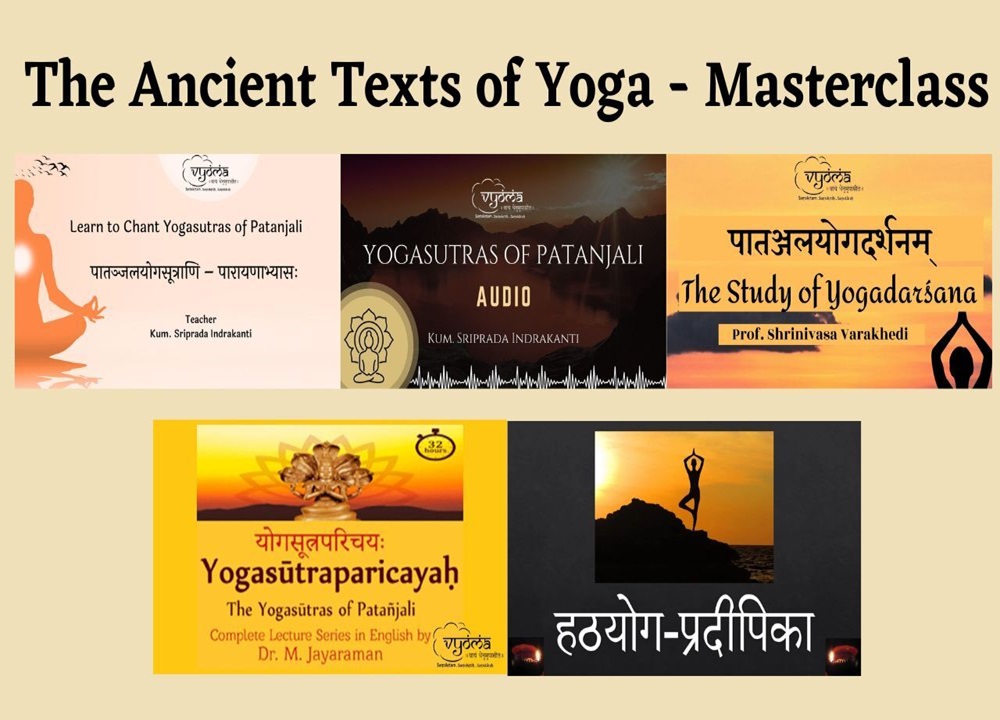
2. Learn to Chant Yogasutra-s of Patanjali Batch – 4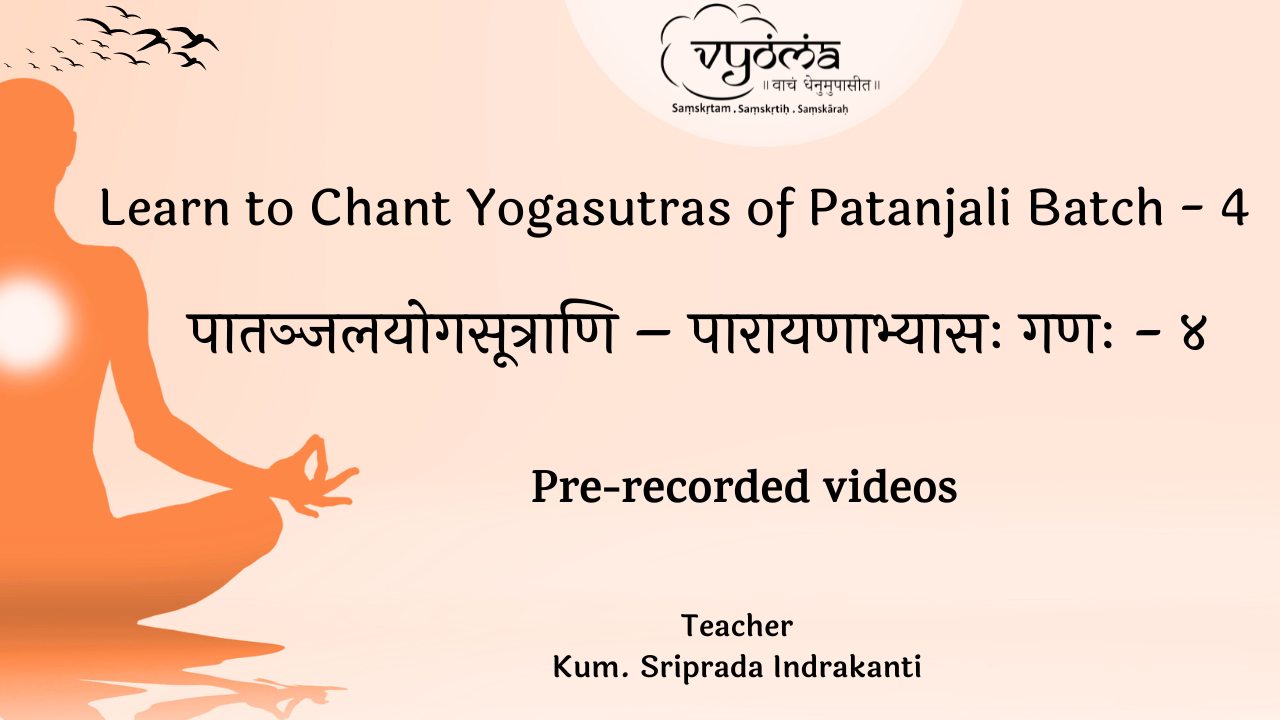
3. Yogasutra of Patanjali – Audio 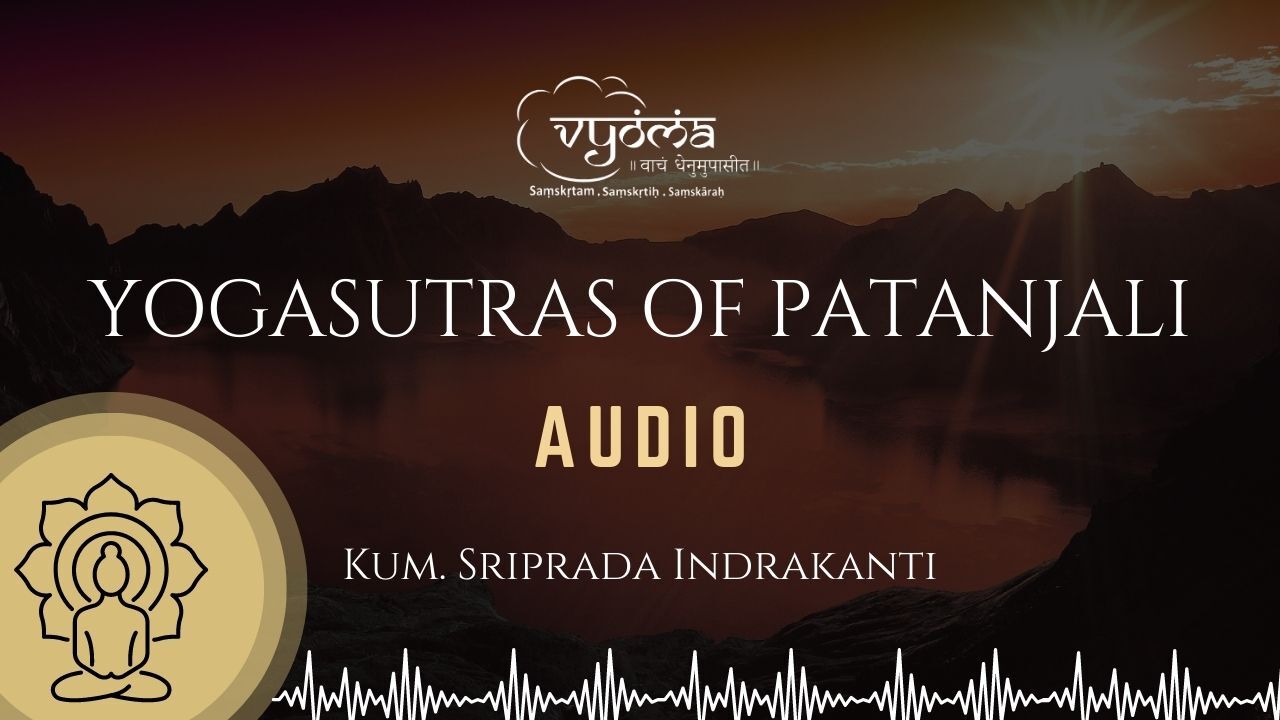
4. Yogasutra Parichaya – Introduction to Yogasutras based on Vyasabhashya 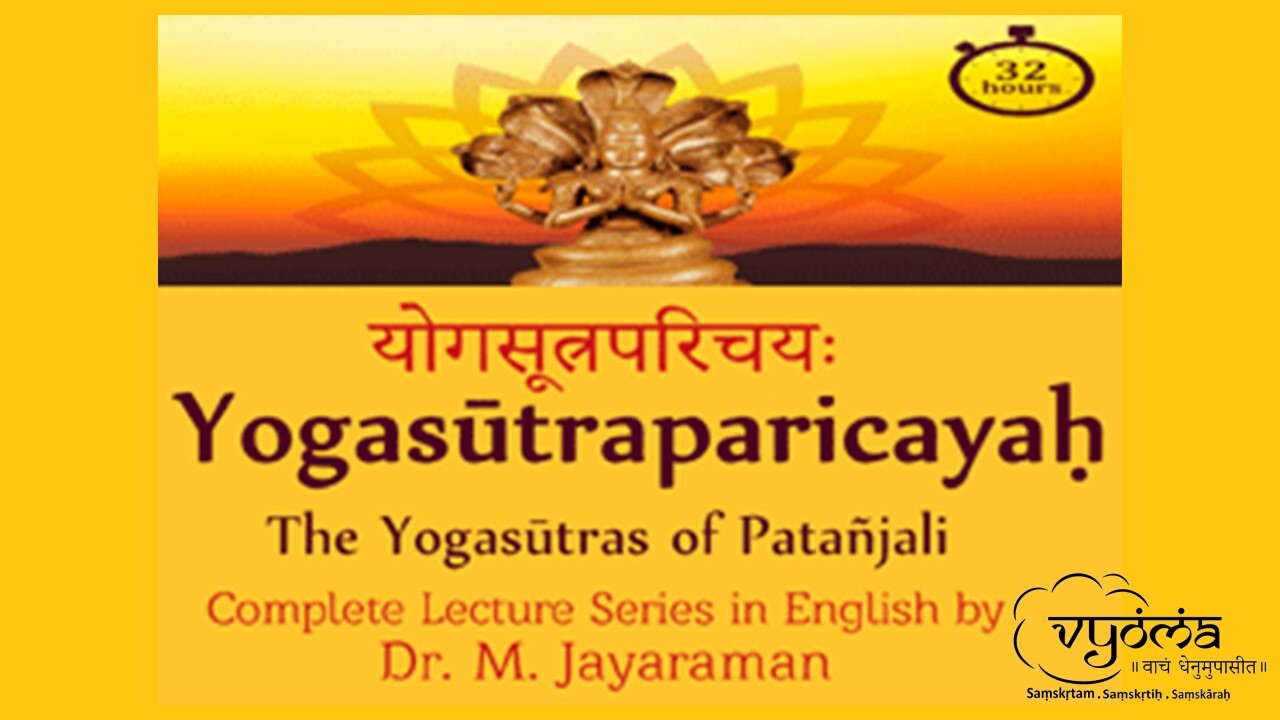
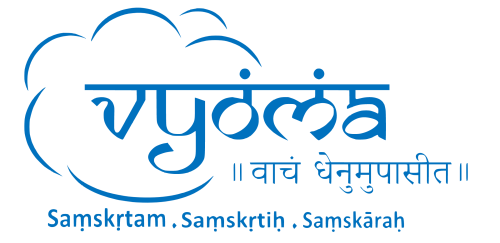
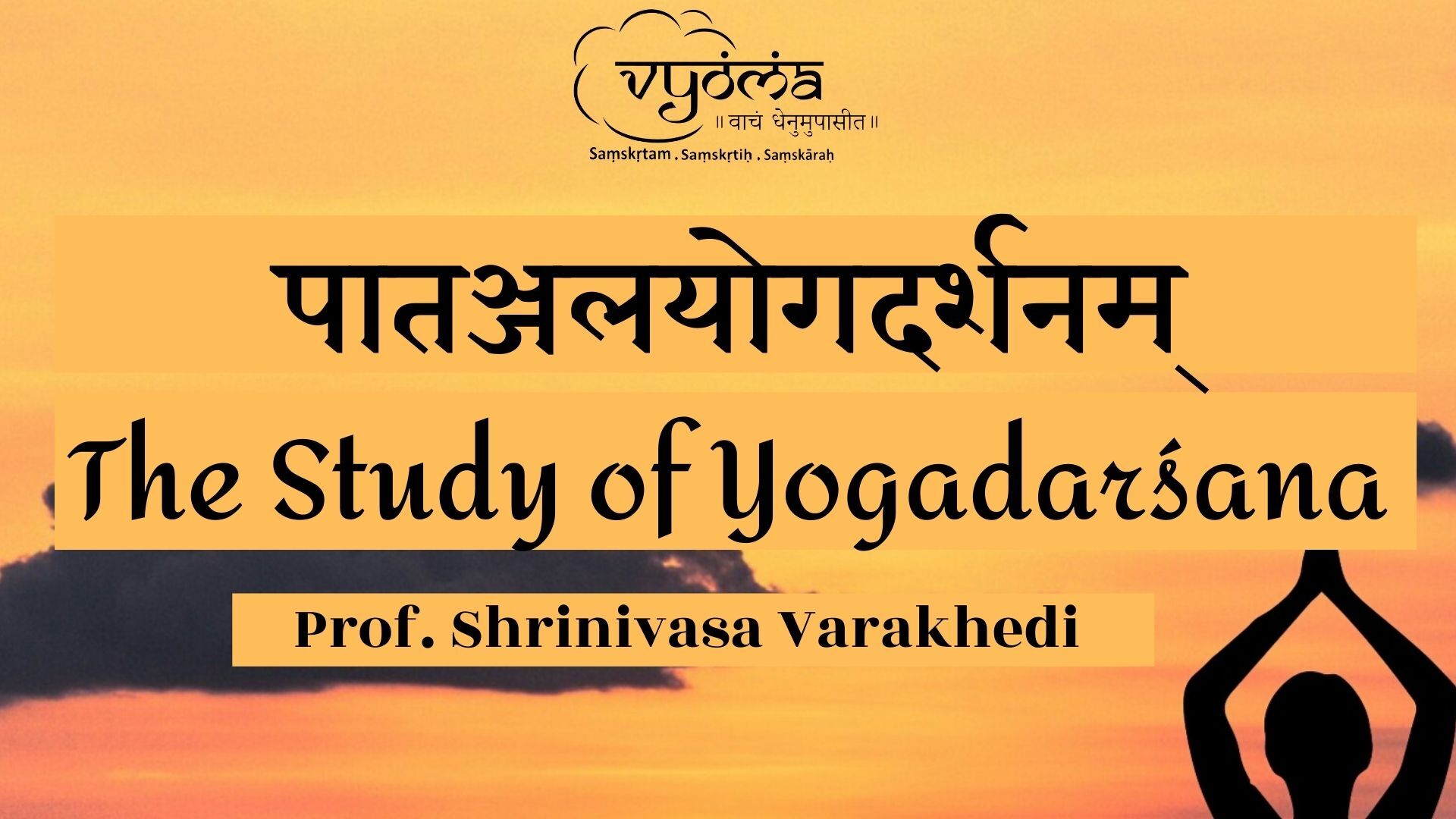
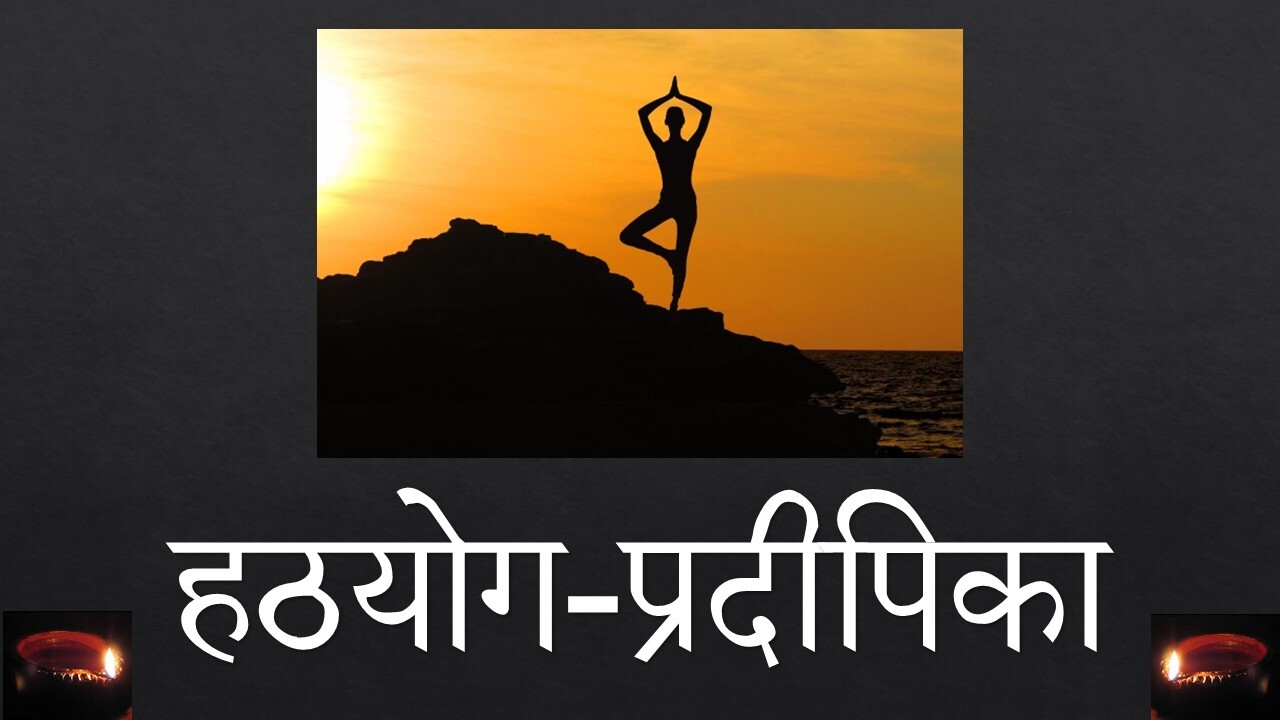
Wow excellent and crispy explanation. While reading itself felt like attained.
Dhanyawada: vyoma. I will try this out step by step